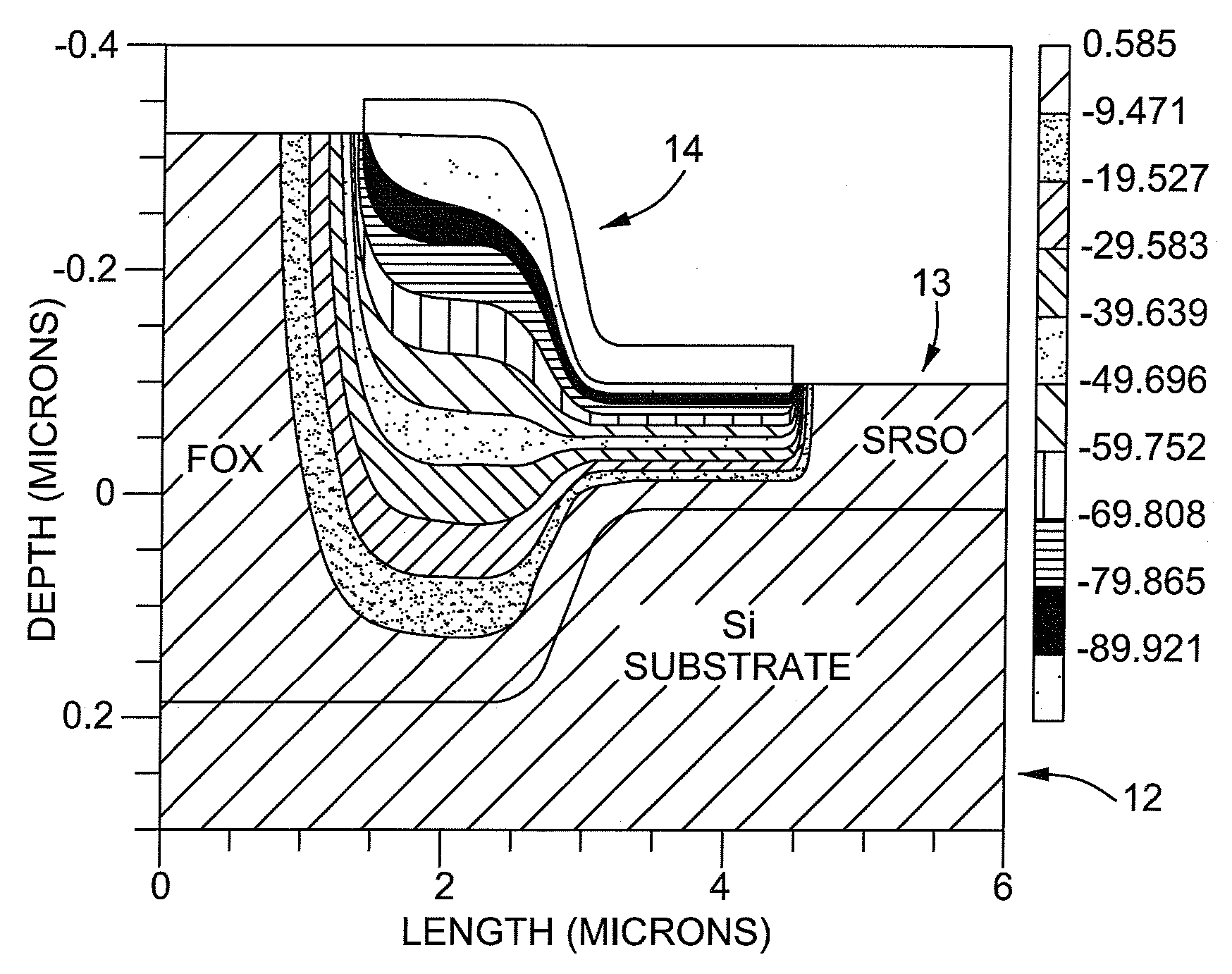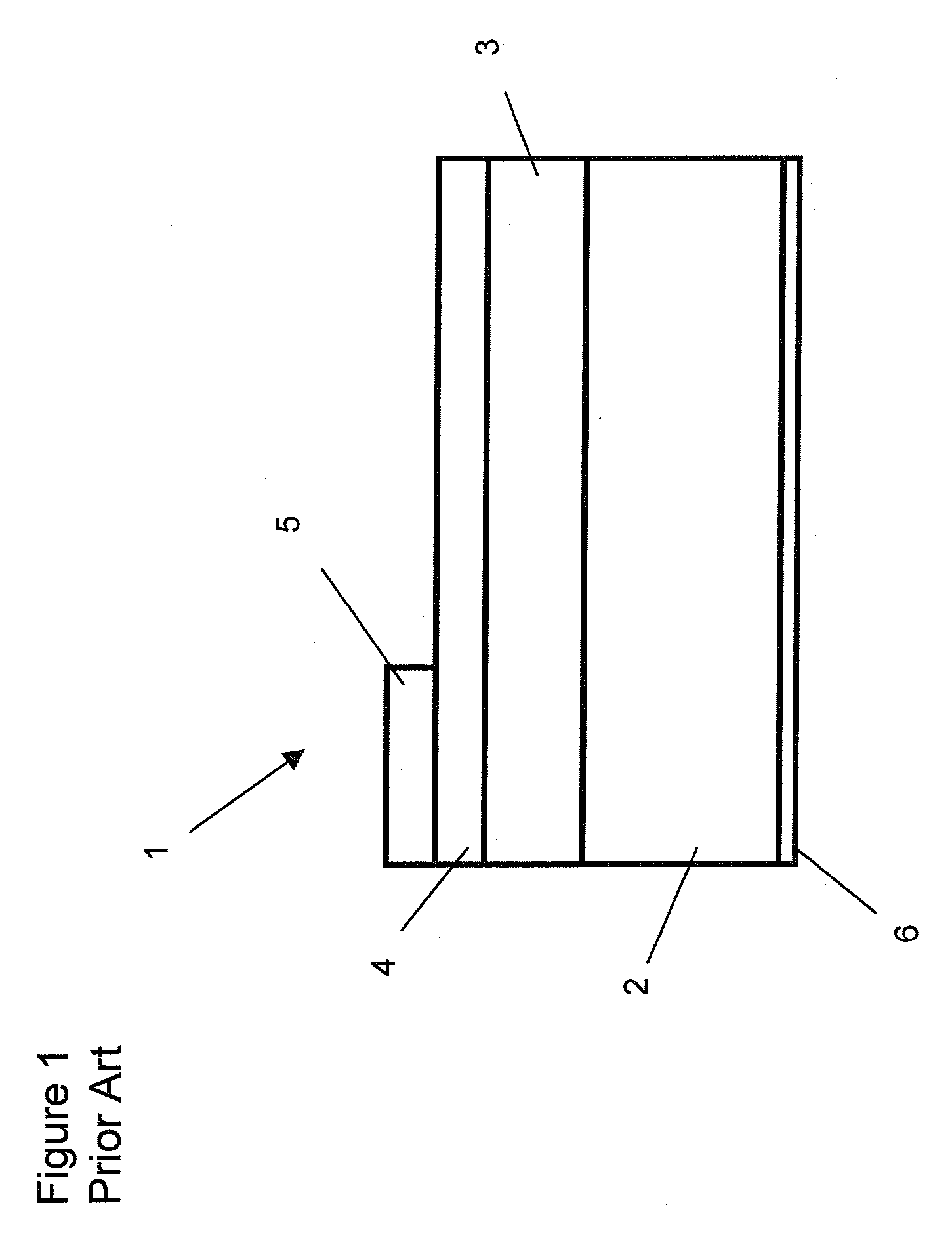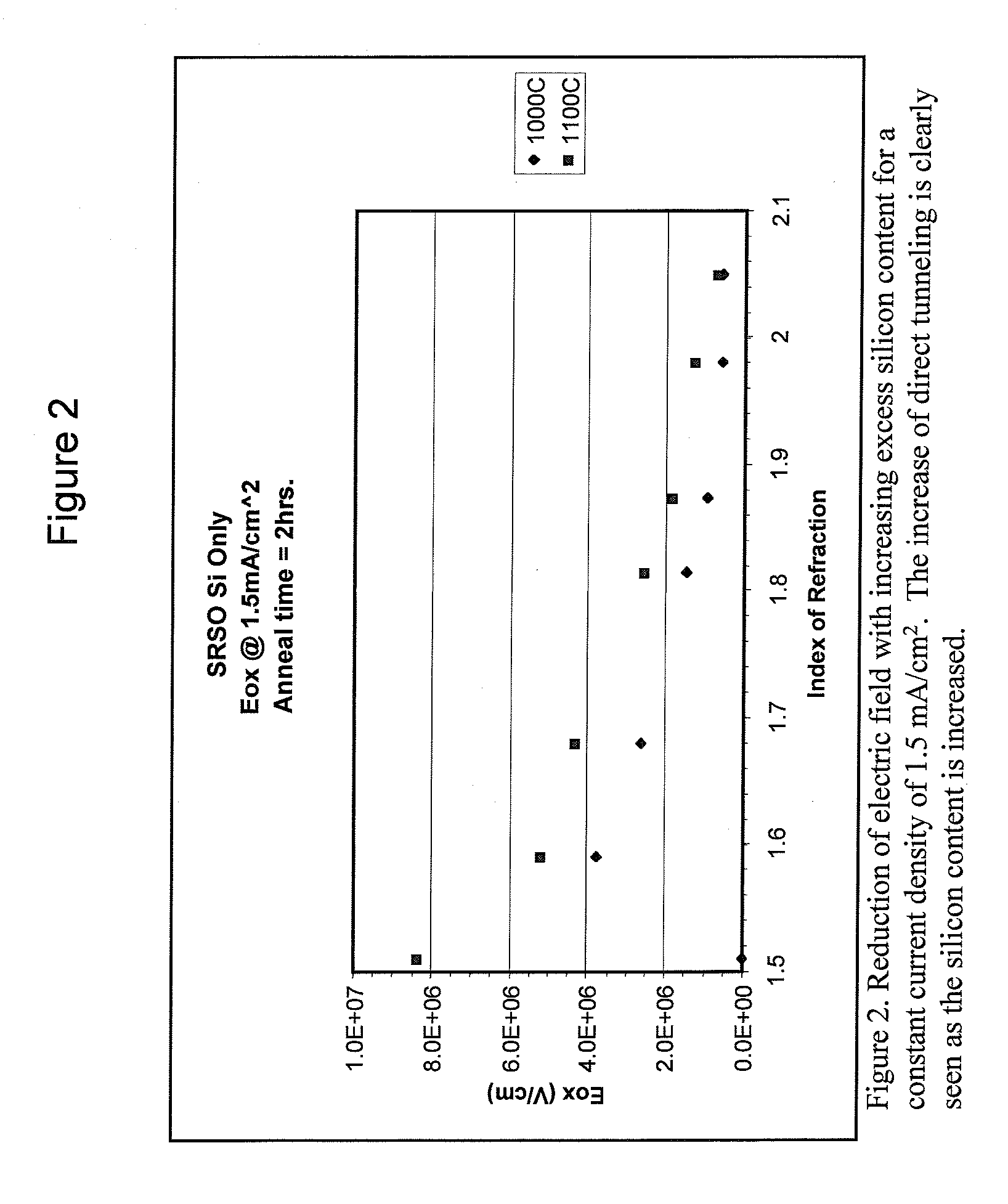Pixel Structure For A Solid State Light Emitting Device
a light emitting device and solid-state technology, applied in solid-state devices, electric lighting sources, light sources, etc., can solve the problems of inability to position individual light emitting elements within five millimeters of each other, inability to provide a contiguous illuminated area, inherent limitations on the brightness per unit area, etc., to maximize current flow and minimize current injection
- Summary
- Abstract
- Description
- Claims
- Application Information
AI Technical Summary
Benefits of technology
Problems solved by technology
Method used
Image
Examples
example process
[0057]With reference to FIGS. 6 to 18, the manufacturing process according to the present invention begins with the substrate 23 (FIG. 6). Pad oxide layers 41a and 41b, approximately 500 Angstroms thick, are thermally grown on opposite sides of the substrate 23 by dry oxygen thermal oxidation to protect the substrate during subsequent steps, e.g. to electrically isolate metal contacts from the substrate 23 (FIG. 7a). Nitride layers 42a and 42b, e.g. silicon nitride, approximately 900 Angstroms thick, are deposited over the pad oxide layers 41a and 41b by a suitable deposition technique, e.g. LPCVD (FIG. 7b).
[0058]In FIG. 8, the top nitride layer 42a is patterned on opposite sides thereof and plasma etched down to the pad oxide layer 41a leaving only a central strip. The field oxide regions 21 are grown in the opened areas on opposite sides of the central strip of the pad oxide layer 41a. Preferably, 1 μm of the thermal oxide making up the field oxide regions 21 are grown using a pyr...
PUM
 Login to View More
Login to View More Abstract
Description
Claims
Application Information
 Login to View More
Login to View More - R&D
- Intellectual Property
- Life Sciences
- Materials
- Tech Scout
- Unparalleled Data Quality
- Higher Quality Content
- 60% Fewer Hallucinations
Browse by: Latest US Patents, China's latest patents, Technical Efficacy Thesaurus, Application Domain, Technology Topic, Popular Technical Reports.
© 2025 PatSnap. All rights reserved.Legal|Privacy policy|Modern Slavery Act Transparency Statement|Sitemap|About US| Contact US: help@patsnap.com



